 One of the most rewarding aspects of homebrewing is learning how to make better beer. To do that, sometimes it’s important to be able to answer the question, “what went wrong with my beer?”.
One of the most rewarding aspects of homebrewing is learning how to make better beer. To do that, sometimes it’s important to be able to answer the question, “what went wrong with my beer?”.
The first step in the problem solving process is to do a full sensory analysis of the beer. Compare what you see, smell, and taste against what you expect from this style of beer or what you intended the beer to be. What does the beer feel like when you take a swallow? Is it under or over carbonated? The BJCP Style Guidelines is a great place to start when analyzing your homebrew.
When something tastes or smells “off”, it may be a clue as to what went wrong with your your beer. It’s up to you to try to identify the specific aroma or flavor that raises a red flag. This can give you a good indication as to where you need to improve your technique. Here are some of the most common flavor and aroma faults associated with homebrew:
- Phenolic – Phenolic flavors and aromas tend to be described as tasting of plastic, band-aid, smoky, or spicy. Though some degree of phenolics may be desirable in certain beer styles (particularly Belgian ales and hefeweizens), phenols in excess can overwhelm a beer. Excessive phenols are usually caused by fermentation issues, most commonly incorrect temperature or an infection. Clean your equipment thoroughly and do everything you can to control fermentation temperature.
- Grassy – Grassy flavors most often come from raw ingredients. Try reducing the amount of dry hops and make sure your ingredients are fresh.
- Alcoholic – With the exception of some barrel aged beers, in most cases you shouldn’t taste or smell alcohol in your beer. If you find your beer to be excessively alcoholic, try reducing the use of simple sugar adjuncts, lowering fermentation temperature, or allowing the beer to age for a longer period of time.
- Acetaldehyde – You’ll know acetaldehyde when you come across it – it smells and tastes just like green apples. Acetaldehyde is usually caused by stressed fermentation. To avoid acetaldehyde, give your wort good oxygenation, allow adequate conditioning time, and use yeast nutrient.
- Medicinal – A beer the tastes or smells like chlorine could be due to chlorinated water, residual chlorine from bleach-based sanitizer, or infection. Boil your water to vaporize chlorine or use bottled water. Also, rinse bleach-based sanitizers well with very hot water. Finally, clean and sanitize thoroughly to avoid infection.
- Sour/Acidic – Unless you are deliberately brewing a sour beer or a beer with sour ingredients, acidic flavors indicate a possible infection. Certain bacteria produce acid, so be sure to clean and sanitize your equipment thoroughly. Scratched fermenters may need to be replaced.
- Yeasty – Excessively bready or yeasty flavors are caused by yeast still in suspension in your beer. Try allowing the beer more time in secondary so it can flocculate and drop out of suspension. Clarifying agents like gelatin can help. Also, when shopping for beer yeast, look for highly flocculating yeast strains.
You may have noticed that several of the reasons why something went wrong with your beer are due to fermentation problems. Before you make any changes to your homebrew system, I would highly recommend investing in a temperature controlled fermentation space. Between temperature control, using a yeast starter to pitch an adequate amount of yeast, and good cleaning and sanitation, you’ll rarely, if ever, encounter any of the faults above.
So, there you have it! Now the next time you ask yourself the question, “what went wrong with my beer?”, you’ll have an answer!
Do you have an off-flavor horror story? Have you ever had to throw out a batch?
*A full list of BJCP beer faults may be found here.
———————————————————————————————————
David Ackley is a beer writer, brewer, and self-described “craft beer crusader.” He holds a General Certificate in Brewing from the Institute of Brewing and Distilling and is founder and editor of the Local Beer Blog.

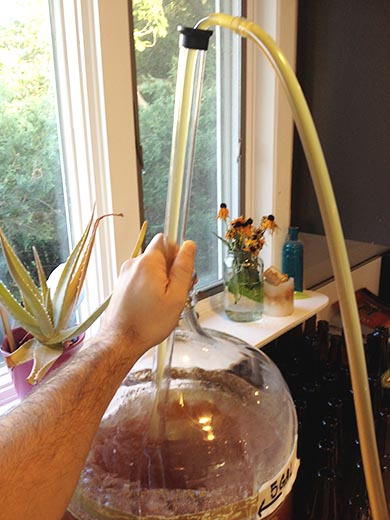 There are many debates in the home brewing world:
There are many debates in the home brewing world: 
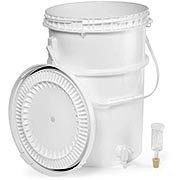
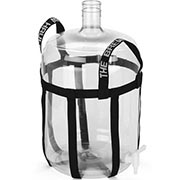

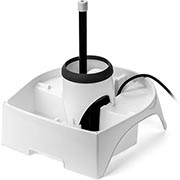


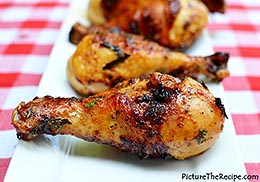 Before you fire up that grill this summer, consider using one of your homemade beers for a homebrew chicken marinade. Marinating chicken and meats in beer go a long way towards making them extra tender, juicy, and flavorful. Many different beer styles will work, but I’ve had the best results from brown ale, porter, pale ale, and witbier. Here are three homebrew beer chicken marinade recipes to try!
Before you fire up that grill this summer, consider using one of your homemade beers for a homebrew chicken marinade. Marinating chicken and meats in beer go a long way towards making them extra tender, juicy, and flavorful. Many different beer styles will work, but I’ve had the best results from brown ale, porter, pale ale, and witbier. Here are three homebrew beer chicken marinade recipes to try!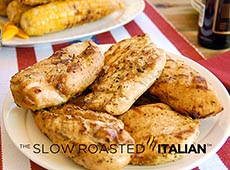 Ingredients:
Ingredients: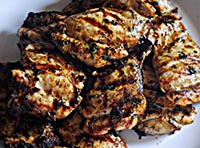 Ingredients:
Ingredients: Many homebrewers have looked at the pile of spent grains after their mash and wondered, “Isn’t there something I can do with all these spent grains?”
Many homebrewers have looked at the pile of spent grains after their mash and wondered, “Isn’t there something I can do with all these spent grains?”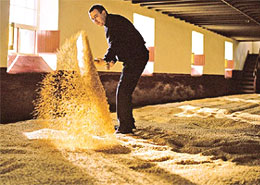
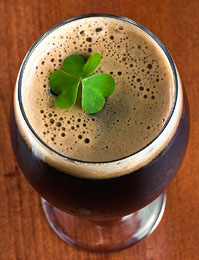 At one time, both Ireland and Scotland were part of the British Empire. (Today, the Republic of Ireland is a sovereign nation.) There is evidence of brewing in Scotland and Ireland dating back hundreds, if not thousands of years. More recently, both countries have contributed a variety of distinct beer styles to the world of brewing, a few of which are listed below.
At one time, both Ireland and Scotland were part of the British Empire. (Today, the Republic of Ireland is a sovereign nation.) There is evidence of brewing in Scotland and Ireland dating back hundreds, if not thousands of years. More recently, both countries have contributed a variety of distinct beer styles to the world of brewing, a few of which are listed below.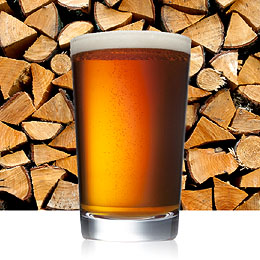 At long last, barbeque season is upon us! The perfect homebrewing accompaniment? Rauchbier!
At long last, barbeque season is upon us! The perfect homebrewing accompaniment? Rauchbier!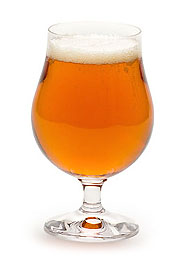 Today’s beer recipe comes from a
Today’s beer recipe comes from a  Whether you just started beer brewing or have been making beer at home for years, we all need some inspiration from time to time. Luckily, many professional brewers are very open about sharing their passion for beer brewing and even go as far as to share their insights online.
Whether you just started beer brewing or have been making beer at home for years, we all need some inspiration from time to time. Luckily, many professional brewers are very open about sharing their passion for beer brewing and even go as far as to share their insights online. Homebrewing can be such a personal hobby. After all, we spend time researching, preparing and making the beer we love so much.
Homebrewing can be such a personal hobby. After all, we spend time researching, preparing and making the beer we love so much.